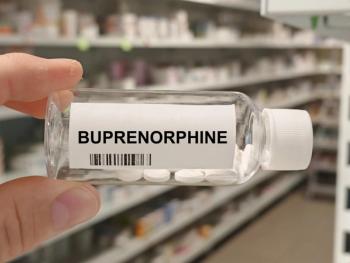
Opioid Prescriptions Decreasing, But Overdose Deaths Still Climbing
For the first time in 20 years, prescriptions for opioids are steadily declining.
For the first time in 20 years, prescriptions for opioids are steadily declining.
In 2012, the height of
“The culture is changing,” Bruce Psaty, MD, PhD, MPH, a researcher at the University of Washington in Seattle who studies drug safety, told the New York Times. “We are on the downside of a curve with opioid prescribing now.”
Decreases were seen virtually nationwide, as South Dakota was the only state that didn’t see a reduction in the number of opioid prescriptions written. The steepest declines were observed in
Paradoxically, the annual decreases haven’t translated to fewer opioid-related deaths, as 28,000 individuals died from drug overdoses in 2014 alone.
Some credit the CDC’s draft and final recommendations on opioid prescribing for contributing to the decline. Those guidelines, which were finalized in March 2016, encourage health care providers to:
· Determine when to initiate or continue opioids for chronic pan outside of end-of-life care
· Understand opioid selection, dosage, duration, follow-up, and discontinuation
· Assess risk and address harms of opioid abuse
Others point to a stronger response from the White House as a possible factor, given that President Barack Obama’s fiscal year
The funding would be applied to evidence-based opioid abuse and heroin use prevention programs,
Still others attribute the decline to the Drug Enforcement Administration’s
Whatever the reason,
“History has shown us and statistics support that [this decline] is nothing more than a paradigm shift,” he explained to Pharmacy Times.
For example, when New York States reclassified hydrocodone from a Schedule III to a Schedule II controlled substance, “within about 30 days, the number of hydrocodone prescriptions decreased equal to the increase of oxycodone prescriptions, and within 90 days, oxycodone prescriptions exceeded that of hydrocodone,” he explained.
He further opined that, to a certain degree, one public health crisis is simply being replaced by another.
“Heroin use has been on the rise due to unavailability of prescription opioids,” Dr. Fudin noted. “In addition, we are seeing more heroin laced with other drugs such as fentanyl, and injecting such drugs may lead to infections such as hepatitis C, HIV, and endocarditis, all of which are a huge cost to families and society.”
Dr. Fudin doesn’t believe pharmacists have played a major role in reducing the number of prescriptions written.
“I think it is relatively rare that a pharmacist convinces a patient that opioids are not their best interest, nor do I think that it would prevent a patient from going to elsewhere with the same prescription,” he said.
Nevertheless,
“Pharmacists are an important, but often an underutilized, resource in the fight against prescription drug abuse,” said Jenna Ventresca, JD, associate director of health policy for the American Pharmacists Association, in a press release. “Pharmacists work closely with patients to provide education about pain medications, improve pain management, and monitor for signs of abuse, misuse, and overdose.”
Pharmacists also have unique clinical knowledge and an obligation to ensure that all possible efforts are made to provide patients and families with lifesaving resources.
On an individual level, there are a number of things
Newsletter
Stay informed on drug updates, treatment guidelines, and pharmacy practice trends—subscribe to Pharmacy Times for weekly clinical insights.


















































































































































































































